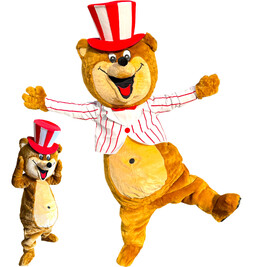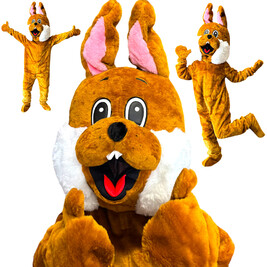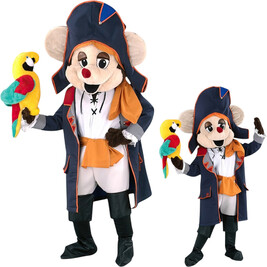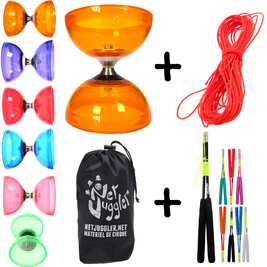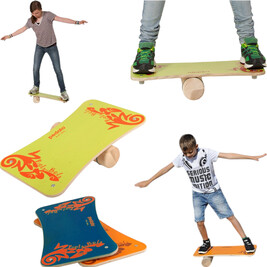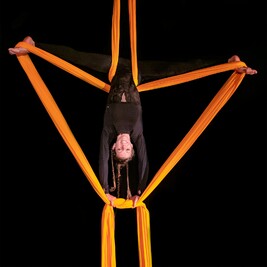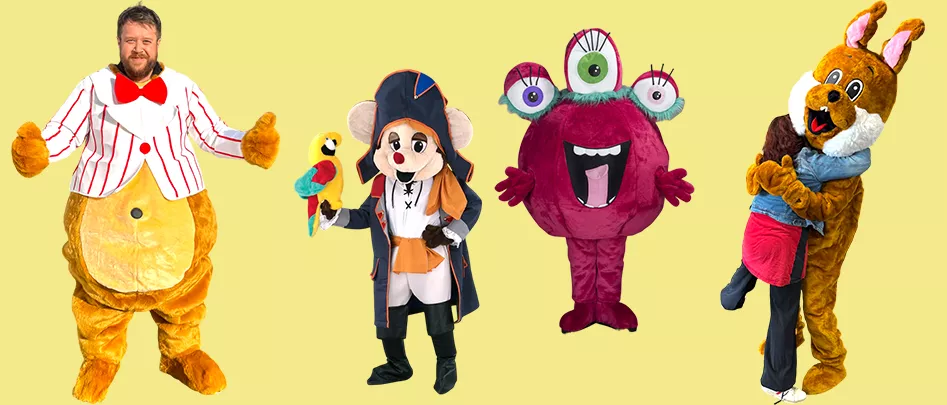
Complete Guide: Becoming a Professional Mascot
The world of mascots is fascinating, full of color, joy, and creativity. Whether you're a professional or considering embarking on this adventure, wearing a mascot costume involves much more than simply donning a disguise. In this article, we'll examine how to wear a mascot costume from a practical perspective, drawing on the experiences of those who have made it their profession.
Using a mascot is usually a role that is shared by two people.
“The Artist” means the person who will wear the mascot costume.
“The Minder” (assistant, companion) has an equally important role, he is the one who is responsible for dressing and assisting the mascot in
audience.
Learning to Move in a Mascot Costume: Tips for Beginners
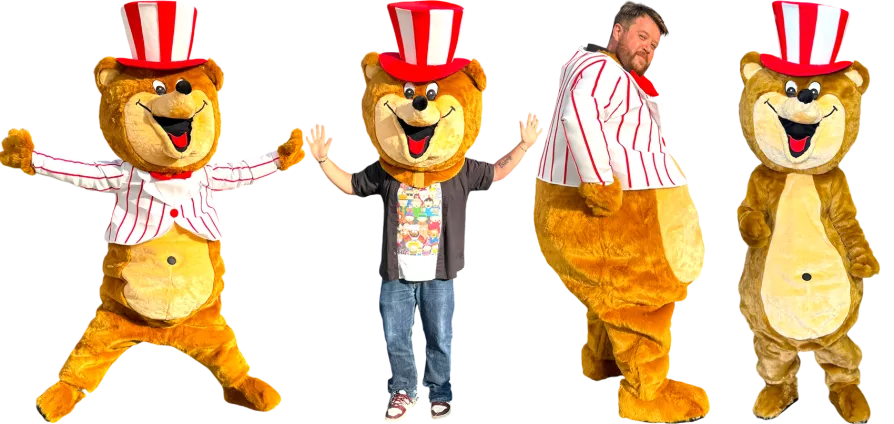
The first step in evolving as a mascot is getting used to the limited movement offered by the costume. Mascots often have large heads, oversized gloves, and cumbersome legs, which can hamper coordination.
One trick is to "communicate with your body." This means emphasizing simple gestures and exaggerating them to express your emotions. Using slow, fluid movements can also prevent accidents. For example, when moving through a crowd, consider using large arm movements to signal your presence, while maintaining a moderate pace.
It's important to be aware of your surroundings and anticipate children's reactions, as they can be unpredictable. Consider using clear, expressive gestures; this captures attention and facilitates interaction.
Minder in action: how to support a mascot in performance
The assistant, or "minder," plays a vital role in ensuring the mascot's safety and success . They serve as the mascot's "eyes" and facilitate interactions with the public. Their job includes managing children around the mascot and relaying relevant information to the person carrying the mascot.
As an assistant, you must be aware of blind spots and use different visual and audio codes to effectively communicate with the mascot. It is strongly recommended that you try on the mascot costume yourself to understand your partner's visibility and comfort limits.
Here are the main responsibilities and qualities of a good assistant:
- Help the mascot dress and undress: Velcro strips, parts inaccessible to the artist.
- Monitor the time spent in the costume and ensure the mascot takes regular breaks.
- Act as an "interpreter" by conveying the mascot's messages to the public.
- Quickly identify dangerous situations and remove the mascot from these chaotic episodes.
- Vigilance: Be constantly attentive to the mascot's environment and interactions.
- Communication: Establish clear and concise communication with the mascot using signals and gestures.
- Proactivity: Anticipate the mascot's needs and take initiatives to ensure its safety and comfort.
- Patience: Manage potentially stressful situations calmly and patiently.

Mascot Pose Guide: Improve Your Stage Presence
Once you've mastered the movements, it's crucial to master the postures. Adopting an open and friendly posture can greatly enhance the experience.
It's essential to always appear inviting. A slight lean forward with arms slightly spread creates an invitation to approach. A closed posture, on the other hand, can give the impression of rigidity and make the interaction less welcoming. Furthermore, poses can vary depending on the situation.
For photographs, tilt your head slightly and place your hands on your hips for a playful effect. When dancing, opt for sweeping movements that show your enthusiasm. Keep in mind that children love exaggerated gestures and comical poses. The more creative you are with your poses, the more likely you will be to captivate your audience.
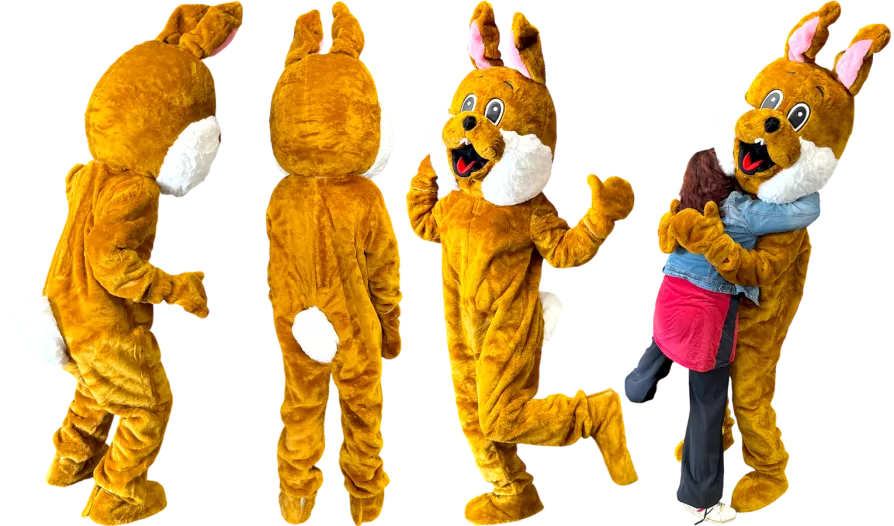
Dancing as a mascot: tips for smooth and safe movements
Dancing is one of the best ways to interact with the public as a mascot. With a costume that can often be cumbersome, it's important to choose moves that work.
The key is to keep the rhythm simple. Movements such as bending the knees, swinging the hips and arms can be very effective. The simpler the movement, the easier it will be for the audience to reproduce and therefore interpret.
Also consider incorporating your mascot's signature gestures. For example, if your character is a bear, add a few movements that mimic the bear walking or scratching itself. Embodying your mascot's personality through dance will help establish an immediate connection with the audience. A permanent smile is also an asset (it's usually integrated into the mascot's head, so you can pout peacefully in your costume)! Joking aside, it's essential to emerge positive vibrations at all times.
Mascot-audience interaction: strategies to captivate and engage
Interaction is crucial in the role of a mascot. Establishing contact and using gestures, since words can be complicated, helps create a bond.
Authentic interaction is what audiences value most. Pay close attention to audience reactions. Applause or children's screams dictate your performance.
Audiences also respond well to humorous gestures. Mime and comedy can be very effective, especially when playing with surrounding objects. For example, bring a child on stage for a little dance or a photo. This creates unforgettable memories and reinforces the magic of the moment. In conclusion, dynamic and joyful interaction is the soul of costumed entertainment.
Interacting with the public, especially children, is an essential part of a mascot's role. Here are some tips for successful interactions:
Best Mascot Moves: Grabbing Audience Attention
- Use slow, smooth movements to avoid accidents.
- Exaggerate simple gestures to express your emotions.
- Adopt an open and friendly posture, leaning slightly forward with your arms slightly outstretched.
- Vary your poses depending on the situation: tilt your head for photos, use broad movements for dancing.
- Do not stand still, as this can be frightening for children.
- Use clear and expressive gestures to communicate.
- Mime and comedy can be very effective.
- Incorporate gestures that are characteristic of your character.
- Keep dance moves simple and easy to follow.
How Mascots Can Interact with Children: Best Practices
There will be many children who will make you suffer, pull your tail, jump on you, they will try to pin you to the ground and rest assured, most of the time their parents will not try at all to supervise them or defend you. This is where the role of the escort is to protect you from these monsters!
On the other hand, you will also have children who will be afraid of you , who will be uncomfortable, who will cry, etc. There is no miracle advice, but here are some approaches that we recommend.
- Be patient and let the children approach you at their own pace.
- Kneel down to their level to appear less intimidating.
- Offer a hand or paw for gentle interaction.
- Avoid staring at children, as this can make them uncomfortable.
- Never force a scared child to interact with you.
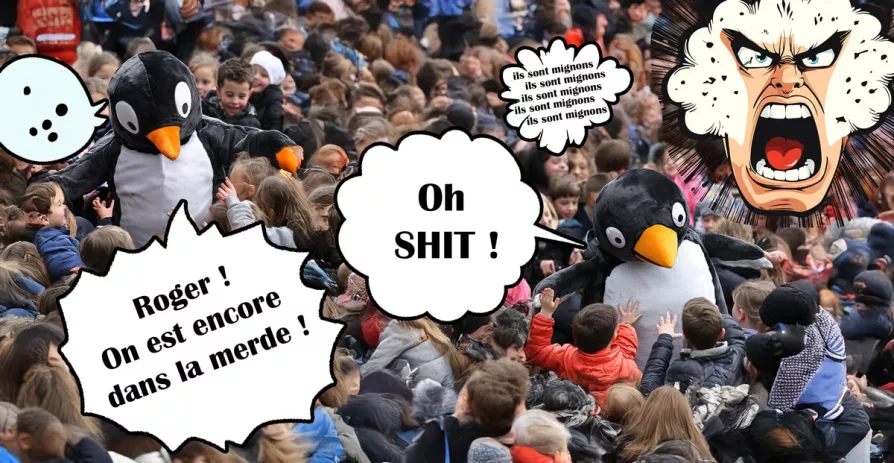
Mascots: How to Manage Heat in Costume During Performances
While wearing a mascot costume can be extremely rewarding, there are challenges abound. One of the main drawbacks is the heat. Space out the sessions. Many amusement parks set time limits of 20 to 30 minutes maximum. Although there are no regulations on this duration in France, caution is advised, especially during hot weather.
Costumes are often padded and made from materials that don't allow much air to pass through, which can lead to overheating during event days.
It's always advisable to prepare before getting into the costume. "Keep water bottles nearby and take regular breaks to hydrate." Another aspect to consider is when you take off your costume. Often, after a long day, the tendency may be to want to take off the costume quickly, but it's essential to dismount slowly to avoid thermal shock.
Mascots: The importance of hydration and breaks for safe performance
You could spend hours searching the internet for heat management tips and find testimonials on the subject. Everyone insists on drinking water. For mascots at sporting events who will be running and jumping around, it's even recommended to start a hydration program the day before the mascot's outing. This is a serious issue, and if you push it too far, you'll see that it's not for nothing that it's recommended to spend less time inside the costumes.
- Drink plenty of water throughout the day, before and after your performance.
- Avoid caffeine and alcohol before wearing the costume, as they are dehydrating.
- Eat salt-rich foods after the event to replace salts lost through sweat.
- Take regular breaks to hydrate and refresh yourself.
- In extreme heat conditions, reduce the duration of appearances to 20-30 minutes.
- Wear light, breathable clothing under the costume.
- Consider using a cooling vest with frozen gel packs.
- Good general physical condition can help you tolerate heat better.
- Try to practice running for the duration of your planned appearance to assess your endurance.
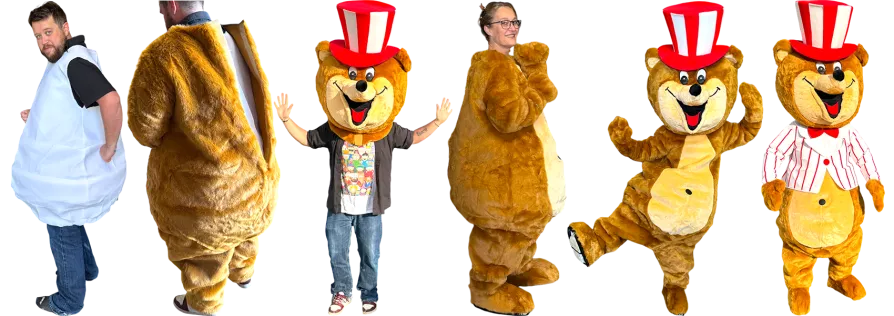
In this bear model pictured above, there are several layers to keep you warm! Or rather, that's what will keep you warm. You need to create a lot of volume for the final visual effect.
A mascot costume generally consists of the following elements:
- Undergarment to give volume
- The faux fur costume
- The padded head
- The jacket too!
Professional mascots: identifying and managing the risks of the job
Working as a mascot isn't just about performance; there are risks to manage as well.
Physical accidents, such as bumping into objects or tripping, are common, especially when visibility and mobility are limited.
It's therefore essential to know your space and plan your movements accordingly. Furthermore, psychological stress can also be a factor. The constant commitment to staying in character can be mentally draining. Consider debriefing with other mascots after events.
Building camaraderie and sharing experiences helps maintain a healthy balance in this sometimes demanding profession. Recognizing challenges also helps you anticipate situations and manage them better.
If you have the opportunity to see mascots in amusement parks, campsites, parades, etc., you will see that they often have a "bodyguard", a person to guide them, to make the connection with what is happening around them. If you observe closely, they have a communication with gestures that only they know: you have to know at all times what is happening around the mascot because the person in the mascot does not have a global vision of his environment.
Professional Mascots: Rules to Follow for a Successful Performance
So you're working for brands with a mascot costume... There are a few rules and guidelines here. Some won't apply to you, but I tried to be comprehensive.
- Never speak in a suit . Communication should be done through body language and with the help of the assistant.
- Do not pick up or hold babies or young children. Costume hands may make movements awkward.
- Do not approach or pet the animals.
- Do not consume alcohol before or while wearing the costume.
- Do not give the impression of endorsing any product or service unless agreed in advance.
Some of these little things may seem obvious! Here are some less obvious ones because you may be walking around for a brand and you may have an image to protect. Don't appear with other mascots, unless you have a prior agreement. We tend to think that it's cool to go and join other mascots that we meet at events or other artists, but be careful not to disrupt their work; they may even have instructions that contradict yours.
How is a mascot made?
As you can see, you're on a website that sells mascot costumes. I still hope you found some interesting information here, even if you didn't come to buy anything on my website! This video advertises a mascot model I sell, but it also explains how the costume is made and the different elements that make it up. Most costumes work on this principle; it should give you a better idea of how a mascot costume works.
The Spirit of the Mascot
In short, wearing a mascot costume is a meticulous ballet of movements, postures, and juggling heat and stress. But with some practical advice and feedback from passionate professionals, you can turn this challenge into a joyful and enriching experience. Whether entertaining children or interacting with the public, the importance of remaining authentic and joyful in your role cannot be underestimated. So immerse yourself in the mascot's spirit and experience unforgettable moments!
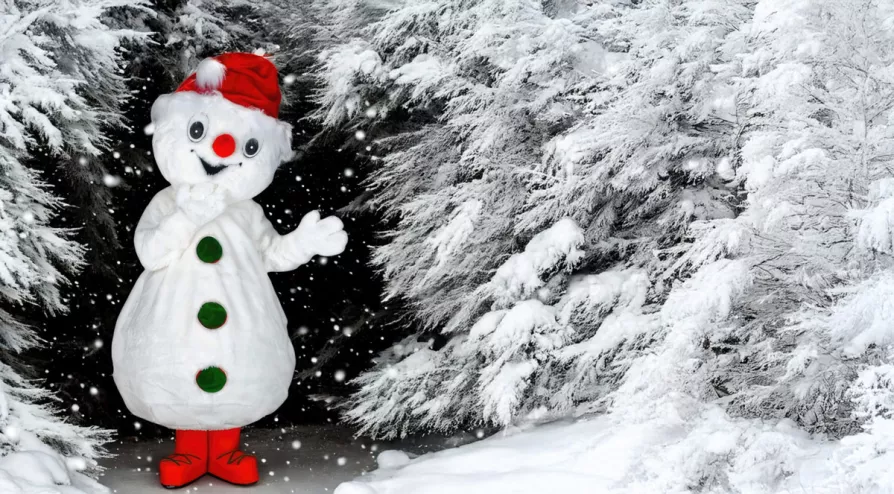
Comments
!Be the First to comment!
Quartz diabolo kit + Accessories
Triple bearing diabolo, Superglass sticks, 10m Henrys string and bag!
